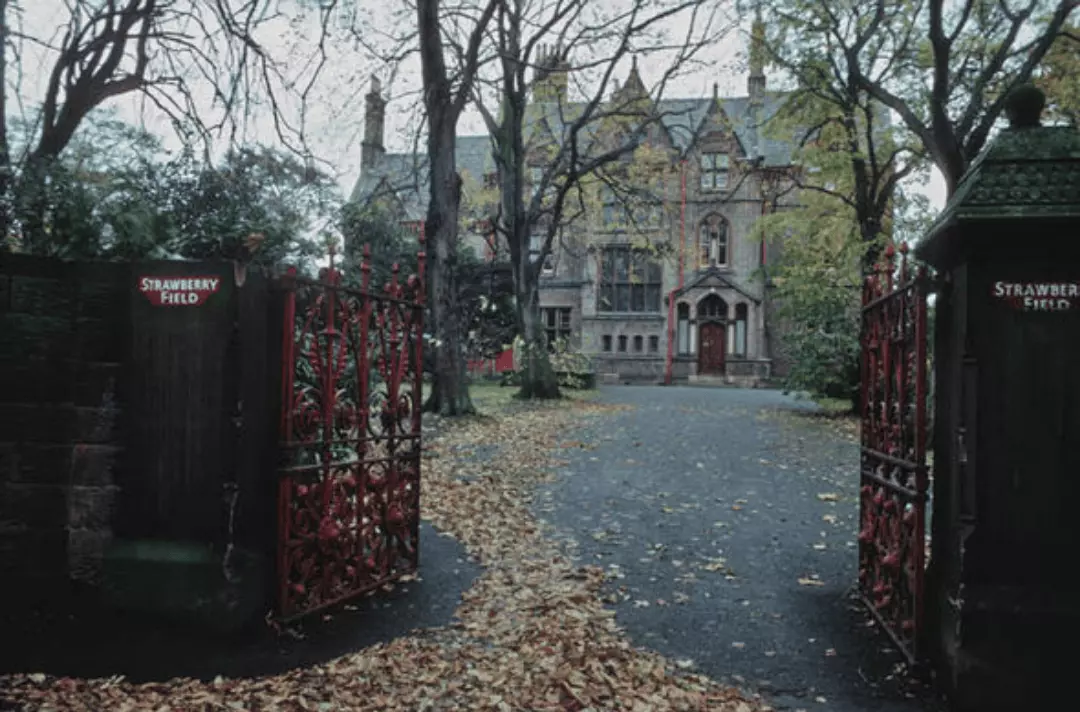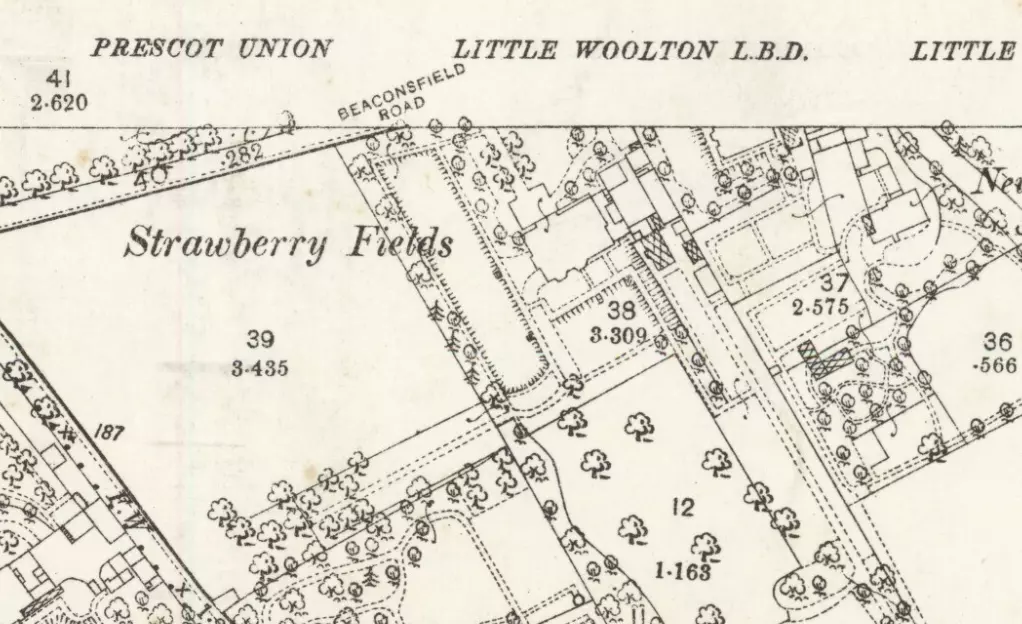Strawberry Fields or Strawberry Field - Which is it?
You would be forgiven for calling the former Salvation Army children’s home ‘Strawberry Fields’. After all, it was ‘Strawberry Fields Forever’ that John Lennon sang in The Beatles’ 1967 hit song. But painted on the gate posts that he would have seen as a child are the words ‘Strawberry Field’. So where did the 'S' come from?

The confusion far predates the song's release, as early as 1891 in fact, when ‘Strawberry Fields’ first appeared on an Ordnance Survey map. This was despite the mansion being given the name Strawberry Field in 1876, six years after building work on the house began. The house was built on a hill in Woolton by a shipping merchant called George Warren. At the time, Liverpool was a titan of the shipping industry, making Warren a very wealthy man. The house sat on a sprawling 7 acres of wooded gardens and was built in a Gothic Revival style, with arched windows and pointed architecture on its roof. It was a striking building that no doubt represented George Warren’s wealth. But why did he name the house Strawberry Field? You can read our theory here.

By 1905 the Ordnance Survey map had been corrected to ‘Strawberry Field’, but the misconception of its name would long continue. After George Warren’s death in 1912, his daughter Mary put the house up for sale where it was listed in the Liverpool Daily Post, again incorrectly, as ‘Strawberry Fields’. In fact, the Liverpool Daily Post would use both instances of ‘Fields’ and ‘Field’ for as long as the newspaper was in publication.
The mansion was bought by Alexander Mitchel, another wealthy shipping merchant who lived in it until his death in 1927. His widow then sold Strawberry Field to The Salvation Army, who opened the house as a children’s home. The Salvation Army was able to purchase the mansion thanks to Mary Fowler, who left the charity £30,000 for the benefit of women and children in Liverpool. The house functioned as a children's home until it was demolished in 1973 due structural problems and safety concerns. It was during this time that a young John Lennon would climb over the wall to explore the gardens and find sanctuary from his difficult home life.

After The Beatles released ‘Strawberry Fields Forever’ in 1967, the children’s home was plucked from obscurity and ‘Strawberry Fields’, albeit incorrect, became a household name. From then on, the mansion and its extensive gardens were cemented as ‘Strawberry Fields’ in popular culture.
So why did that extra 'S' appear? John Lennon sang ‘Strawberry Fields’ simply because he thought it sounded better, but locals have been referring to the house in the plural long before the song was written. Our best guess is that is it something of a colloquialism. Scousers are known for playing with language and adding extra words or letters. For example, people don’t do their weekly shop at Asda, it’s The Asda! What we assume started as local vernacular, became words that would go on to be recognised in any language.
You can learn more about the history of Strawberry Field and how it inspired a young John Lennon in our visitor exhibition.
This written piece was made possible thanks to 'From Silk to a Song: A Complete History of Strawberry Field' by Philip Kirkland and 'Places they remember: Penny Lane and Strawberry Fields' by Rachel Jones.